In office design, graphics are no longer just a decorative element. They have become a full-fledged tool for communication, influencing the atmosphere and strengthening brand identity. Read on to find out how graphic elements transform office interiors and what functions they perform.
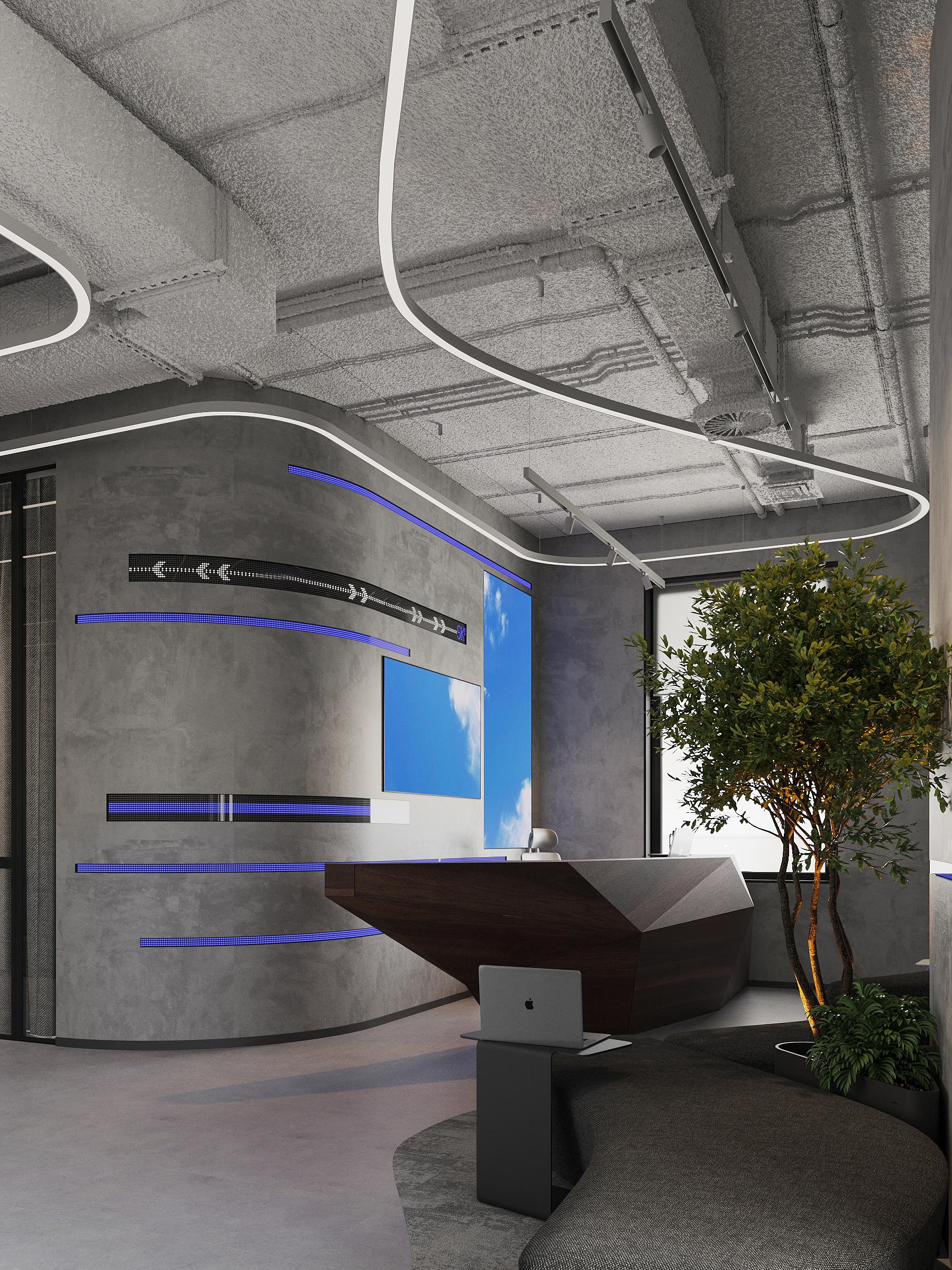
Office. Design by ZIKZAK Architects
A tool that shapes the environment
Graphics in an office space are not just a trivial decoration for the walls. They work to shape the emotional background, create impressions, suggest the functions of individual areas, and convey corporate values. The main thing is that graphics do not become something autonomous, living a separate life. It should be woven into the overall fabric of the interior — it is a means of placing semantic accents. With the help of graphics, an office can be transformed into a flexible communication environment that speaks to the team, partners, and guests every day in the language of colour, symbols, and meanings.
Flexibility and consistency: types of graphics in the interior
Graphics can be temporary or permanent, depending on the company's goals and style:
- Flexible elements: posters, films, removable panels or magnetic surfaces. They are easy to update, for example, in the event of rebranding or the launch of an internal campaign. This allows you to keep the office constantly up to date.
- Stationary elements: frescoes, mosaics, artistic reliefs, decorative inserts integrated into the architecture. They form a long-term visual code for the space.
Most often, designers combine both approaches, achieving a balance between consistency and variability — this way, the office remains recognisable but not static.
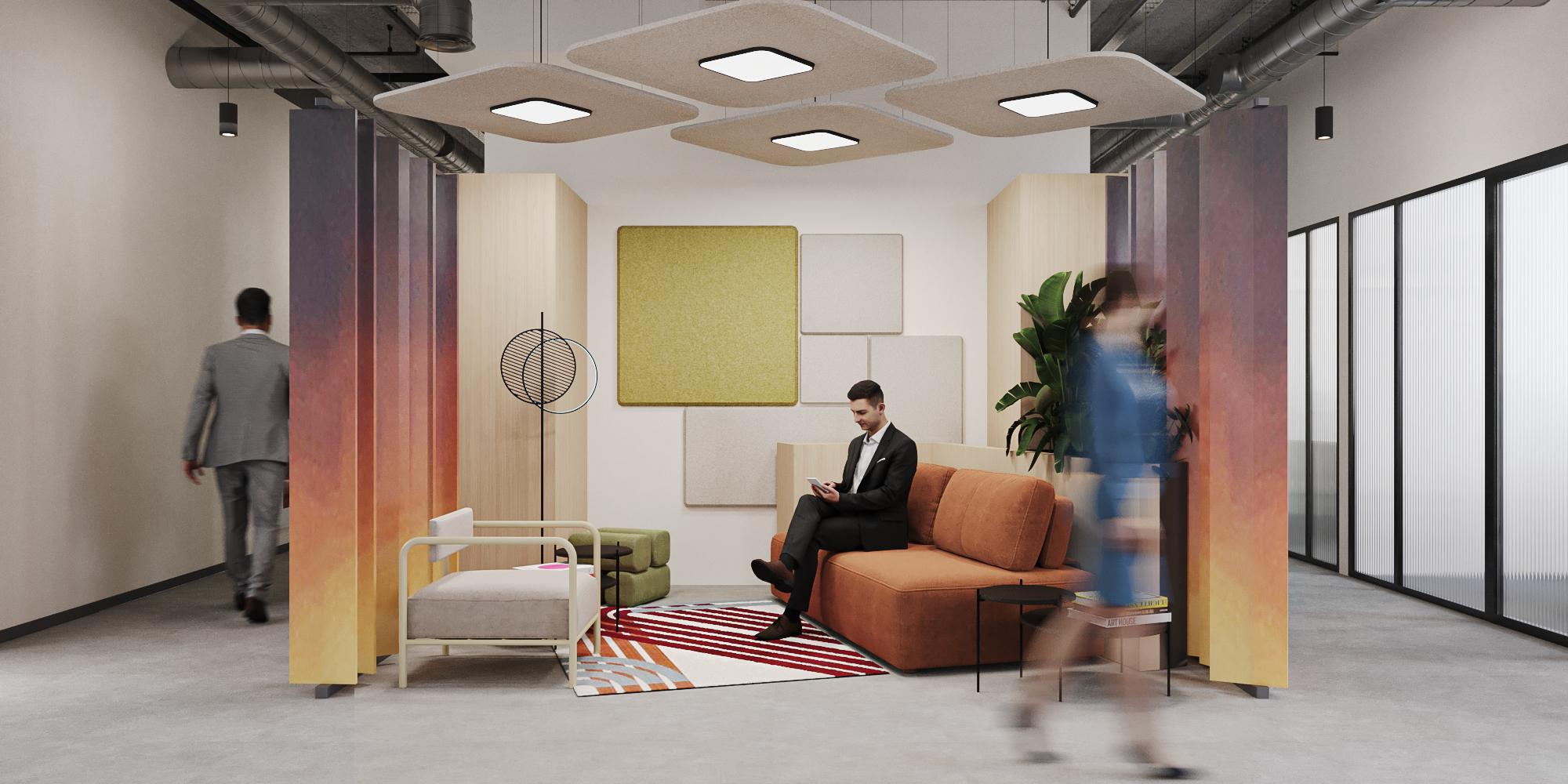
Office. Design by ZIKZAK Architects
Key functions of graphics in the office space
1. Brand identity formation
Graphics are a powerful carrier of corporate DNA. Visual symbols, logos, corporate colours, slogans, patterns — all of these help to recognise the company and feel its values. An office filled with such markers becomes not only a workspace but also part of the brand. This is especially important in customer areas — reception areas, meeting rooms, and showrooms.
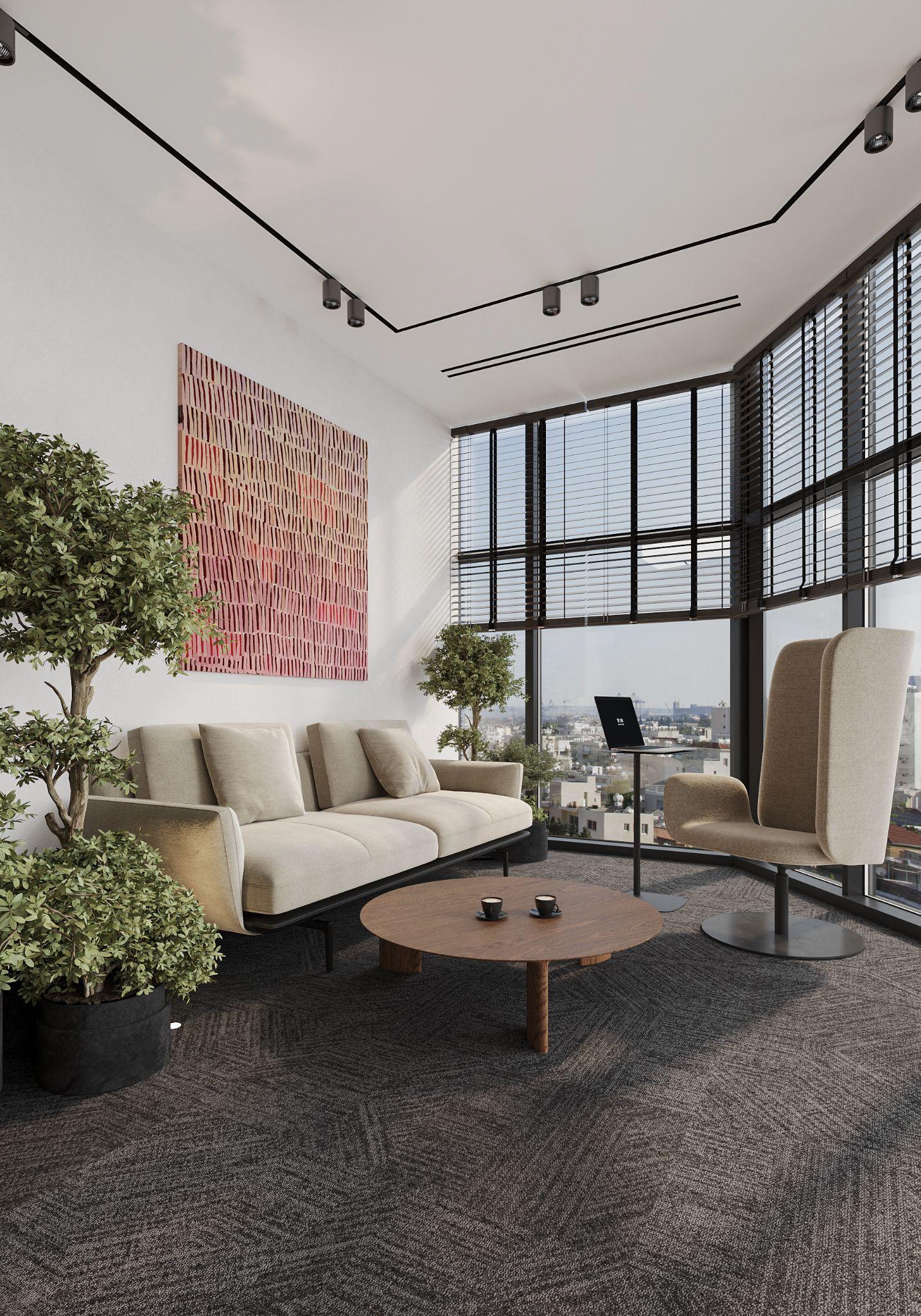
Office. Design by ZIKZAK Architects
2. Navigation and zoning of space
In large or open offices, orientation in space can be difficult. Graphics come to the rescue: informative icons, arrows, colour accents or thematic markings facilitate navigation and create logical visual boundaries. This is convenient and also adds rhythm and structure to the design.
3. Motivation and emotional engagement of employees
Quotes from prominent figures, visualisation of the company's mission, graphic representations of achievements or principles — all of this enhances the sense of belonging. People are more motivated and engaged in an environment that inspires, reminds them of common goals and evokes an emotional response.
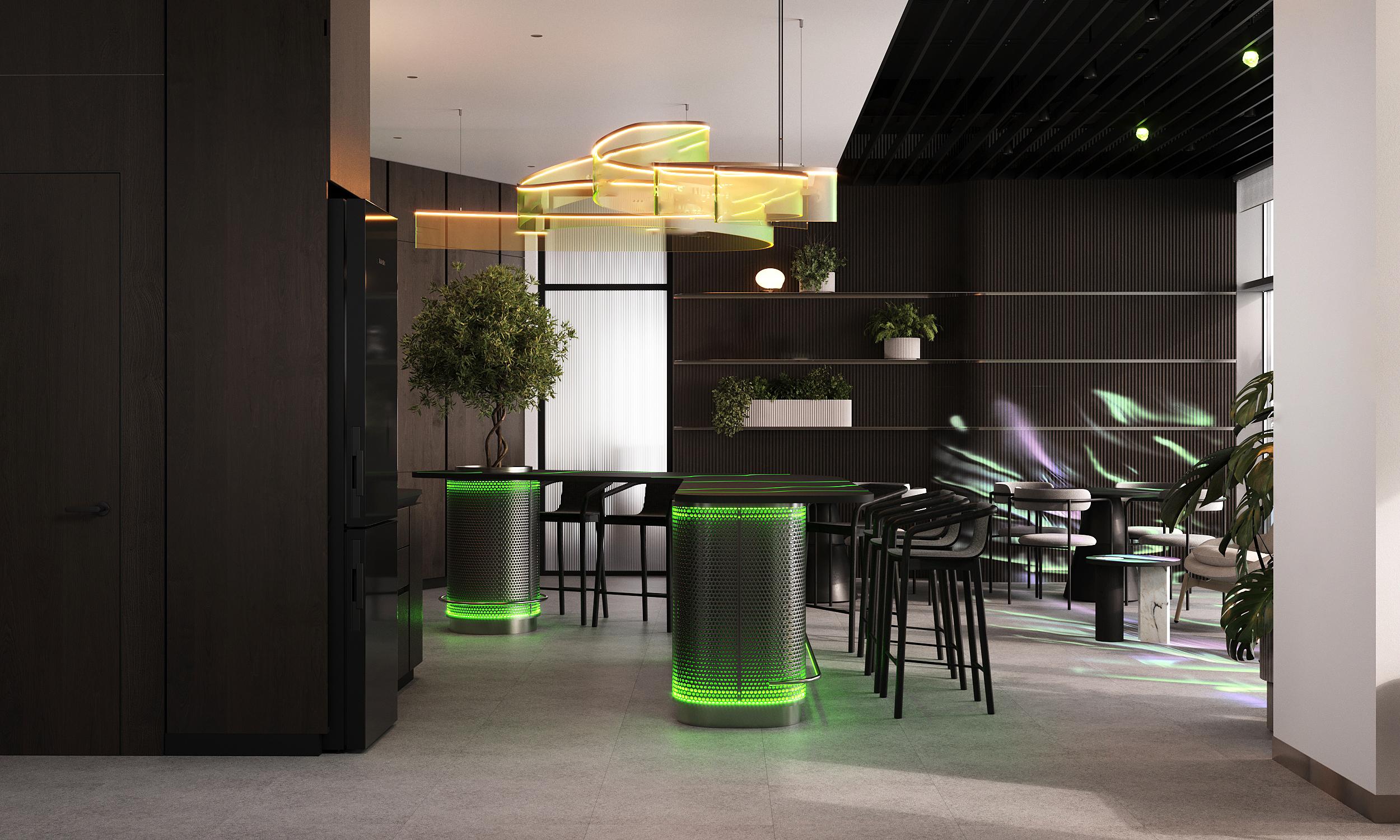
Office. Design by ZIKZAK Architects
4. Functionality and acoustics
Modern graphics can be integrated into functional objects. For example, decorative acoustic panels can feature unique prints that support the overall identity of the space. Such solutions simultaneously reduce noise levels and enhance the design.
5. Individuality and recognisability of space
One of the main trends in recent years has been a move away from universal office style in favour of distinct individuality. Graphics make it possible to make each office unique. These can be art objects, images based on the company's history, or elements that reflect its culture or regional identity. This approach helps to form a deeper emotional connection between the space and the people who work in it.
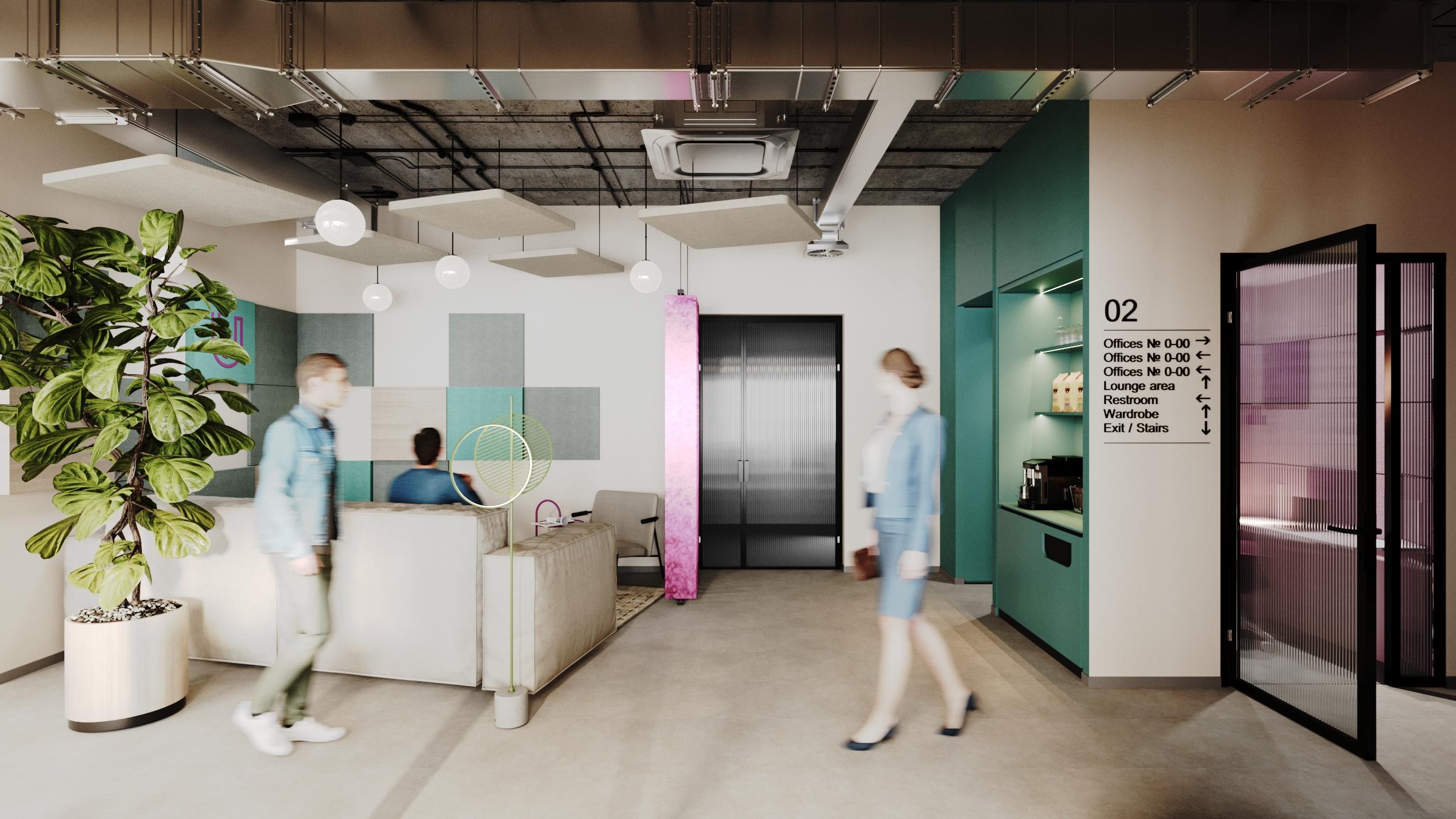
Office. Design by ZIKZAK Architects
6. Digital technologies and media installations
Digital graphics expand the possibilities of classic approaches. LED screens, interactive panels, animated projections are dynamic tools that can be adapted to different scenarios, bringing graphics to the level of a spatial interactive video clip. They are particularly appropriate in presentation areas, lounges, or lobbies. Such solutions surprise and reinforce the company's image as innovative and open to modern technologies.
Graphics in office interiors are a visual touch and part of a comprehensive approach to organising the environment. They support corporate culture, help with orientation, motivate and create a unique space where people want to work. And the deeper the designer integrates them into the overall concept, the more powerful the effect.
Read also:
How does space build trust and add value to a project?
Top 5 most expensive private homes in the world: who lives in them?
How does openspace design affect staff turnover in Cyprus?

